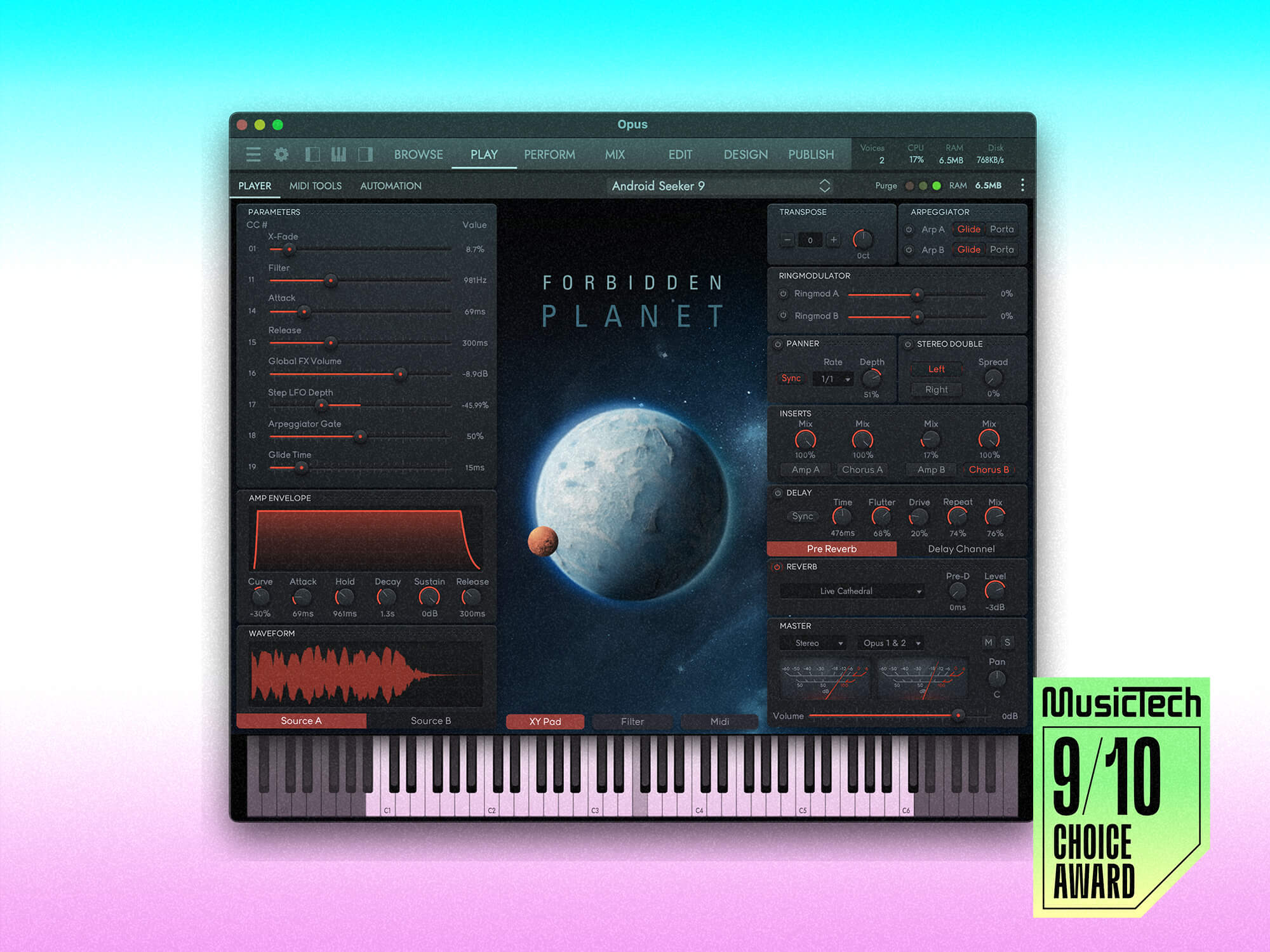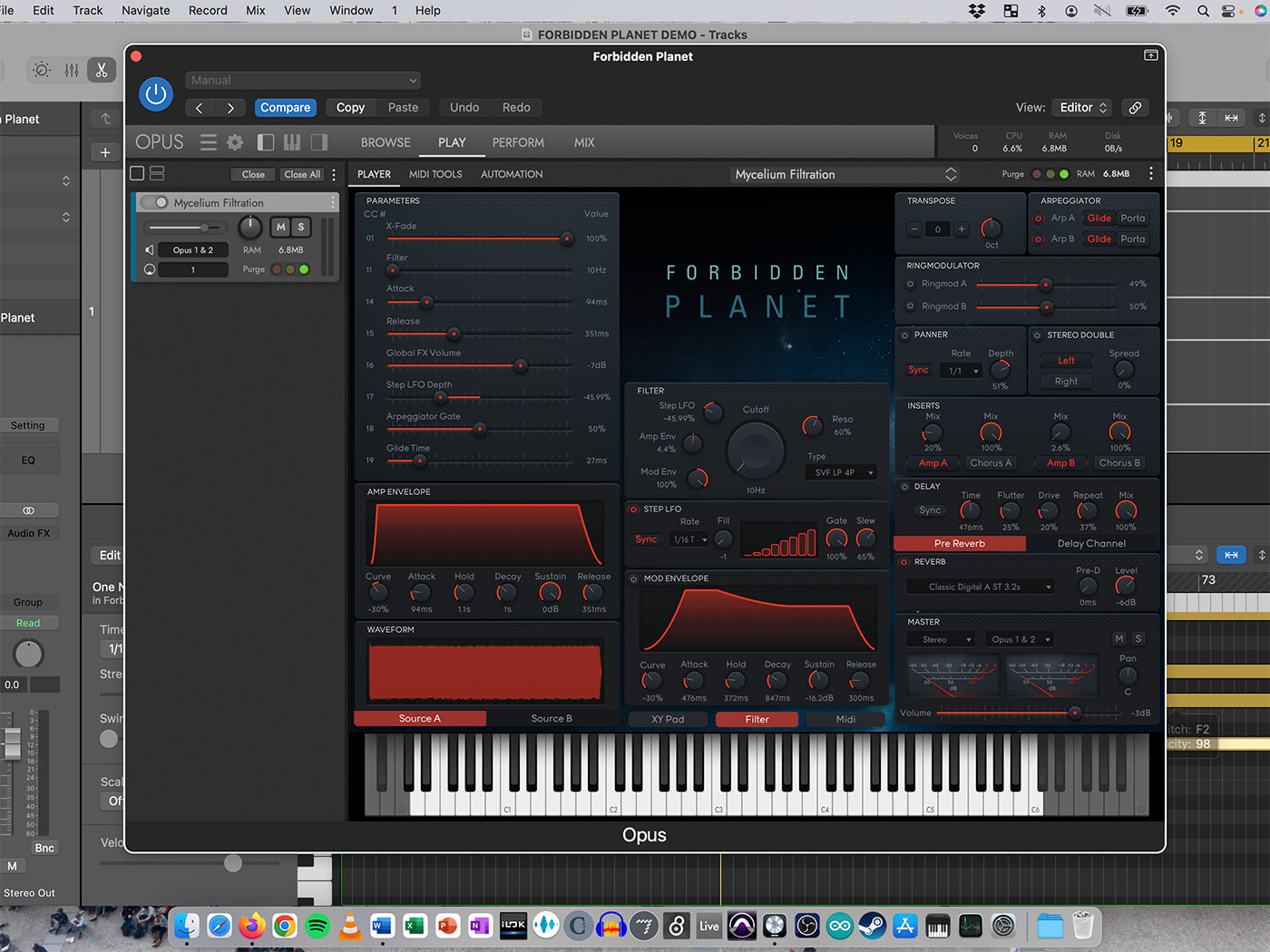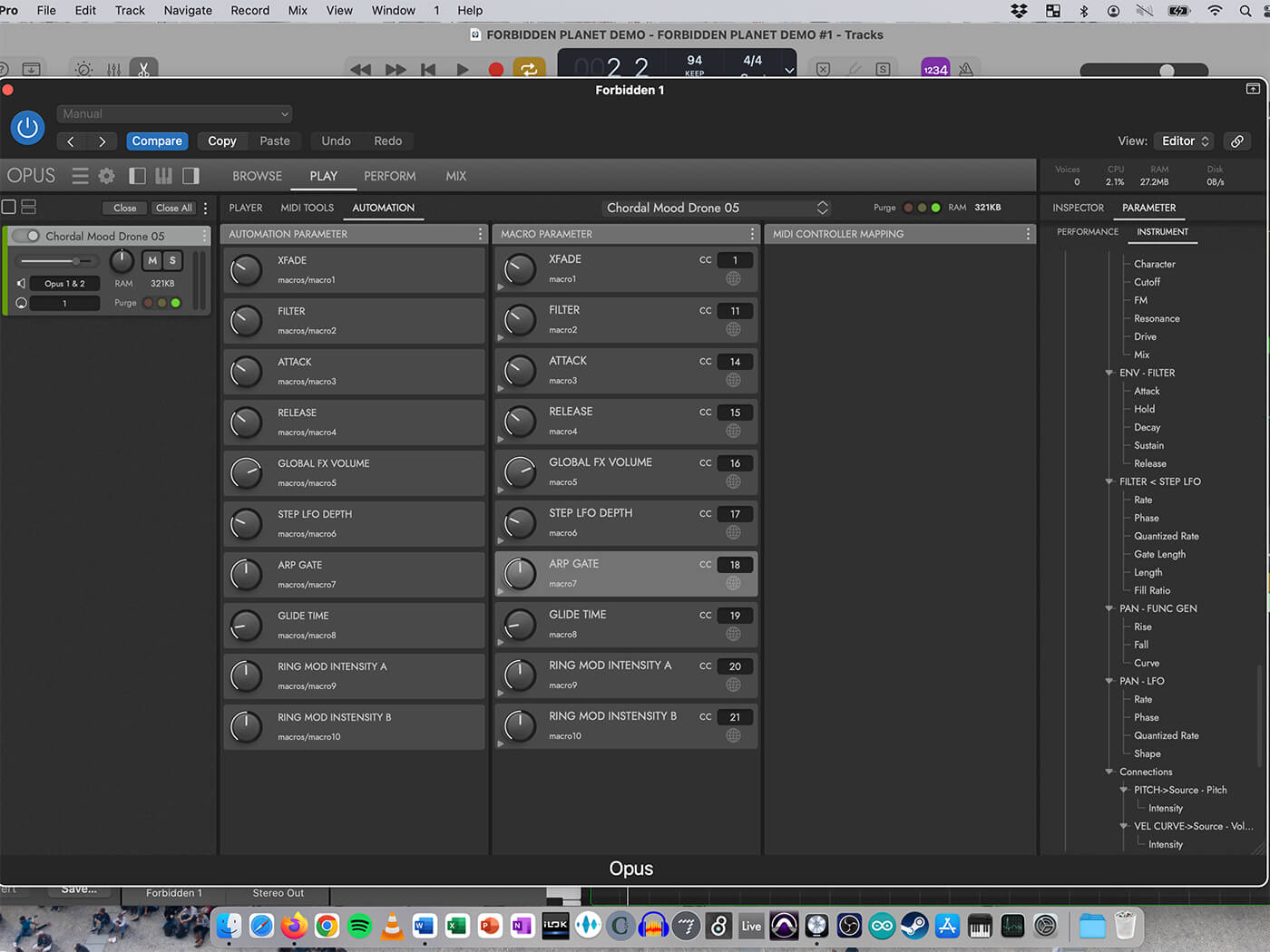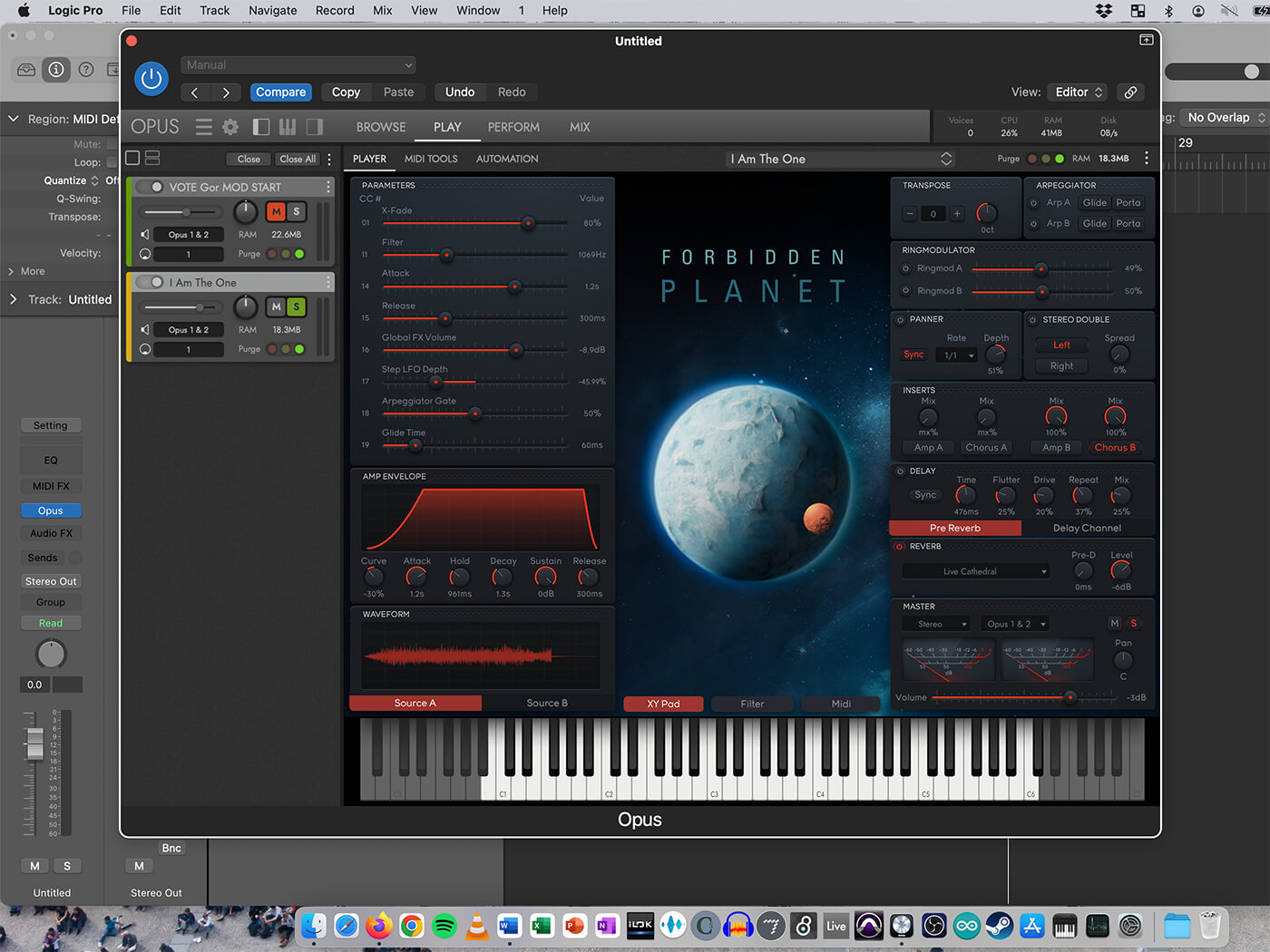EastWest Forbidden Planet review: Where oscillators fear to tread
EastWest’s new hybrid instrument brings much-needed synthesis to the company’s catalogue.

Review Overview
Our rating
9
Our verdict
⊕ Synthesis parameters add lots of sound-shaping options
⊕ Included audio effects further expand the sound
⊕ Opus engine is excellent overall
⊖ Steep price as a standalone purchase
⊖ Deep-level macro customisation fiddly and hard to use
EastWest is synonymous with acoustic sample libraries. The company has earned its reputation as one of the world’s premier purveyors of orchestras, choirs, drums and more. It took some by surprise, then, when it announced the release of its first fully-fledged library dedicated to synthesis – but fear not, the company isn’t relying on beginners’ luck and there are no half-measures here.
In what’s becoming something of a trend in the world of sampling, EastWest wasn’t content with merely sampling hardware synths or with building a straight-up software synthesiser. Instead, like a giant melting pot of sound, Forbidden Planet is a sampler-synth hybrid, merging electronic tones, orchestral instruments, vocal recordings and more.
Each instrument in the collection combines two sound sources – typically a synth sample and an acoustic sample – with the balance between the two controlled via a crossfader. On top of these samples, a variety of synthesis parameters are available to modulate, filter and mangle. The result is a sound palette that straddles the line between sound design and music: bright leads morph into breathy whispers, bass drones are rounded out with the weight of a cello section, and some of the curiosities found in the effects section defy easy description. It’s exciting to the ears, and perfectly suited to composers looking to write genre-less scores.
EastWest makes clear that the collection is intended to be relevant to EDM and rap producers as well as composers – but there can be little doubt that Forbidden Planet plants its flag firmly in cinematic territory. To be fair, the library boasts a massive 645 instruments, which run the gamut from pristine and futuristic to industrial and distorted, passing through some retro arpeggios along the way. With that many sounds on offer, there’s sure to be content relevant to popular music production, but the overwhelming majority of the instruments here are imbued with a sense of scale that simply demands a space opera or dystopian action-adventure.

Expertly crafted by company veterans Doug Rogers and Nick Phoenix, the quality of each instrument is, as you’d expect, world class. Many of these instruments slip seamlessly into an arrangement with minimal tweaking, but if you’re looking for some quick performance controls: in the centre of the plug-in is an image of a luminous blue planet, with an adjacent rust-red moon. At first glance, you might think this is just a bit of visual inspiration but it’s actually an X/Y pad. Assigned by default to crossfade between sound sources on the horizontal X-axis and control a filter cutoff on the vertical Y-axis, it does an excellent job as a high-level tone and timbre control.
While Forbidden Planet’s easy-access ear candy is sure to please industry professionals on a deadline, once you move past the surface it becomes clear that EastWest has put real power under the hood. There’s an excellent filter section with an envelope generator, an eight-step LFO with its own gate and slew, and four filter types to choose from. Each sound source has a dedicated ring modulator, and there’s dual 16-step arpeggiators that, once combined with the filter’s step LFO, can produce complex rhythmic interactions. Each sound source has its own channel strip in the mixer page and, once you start loading up the included audio effects, the scope for sound modification expands exponentially.

The recently rejuvenated OPUS engine is a joy to use. It’s fast, well laid out, and the performance page, which lets you load and simultaneously play multiple instruments from any EastWest collection, is fantastic. The MIDI tools page has several modules that let you shape your performance, and the in-engine script editor lets power-users really dig deep into what OPUS can do.
Of course, there are a few limitations – the X/Y Pad is locked to the crossfade and filter cutoff for now, even if it’d be useful to swap in other parameters. Plus, although the engine features an extensive parameter macro system, in practice, making your own macros or changing existing ones gets confusing quickly, and it can be a struggle to actually find the parameter you want to control. That said, each instrument comes with a pretty comprehensive selection of macros and automation mappings that are ready to go, and for many users there’ll be no need to fix something that isn’t broken.

As a standalone instrument, this is a pricey investment up against stiff competition. There are several libraries with a similar focus and, based on sound alone, it’s debatable whether EastWest’s latest stands out from the pack. However, when viewed as part of a Composer Cloud+ subscription, Forbidden Planet is an excellent and much-needed edition to the EastWest catalogue, rounding out an area the company had thus far neglected.

Key Features
- 54 GB library with 645 instruments
- XY Pad for easy morphing and performance
- Powerful Filter and Modulation sections
- Available as part of a Composer Cloud+ subscriptions
- $399 ($299 currently on sale)
- Contact EastWest
- Buy: Soundsonline